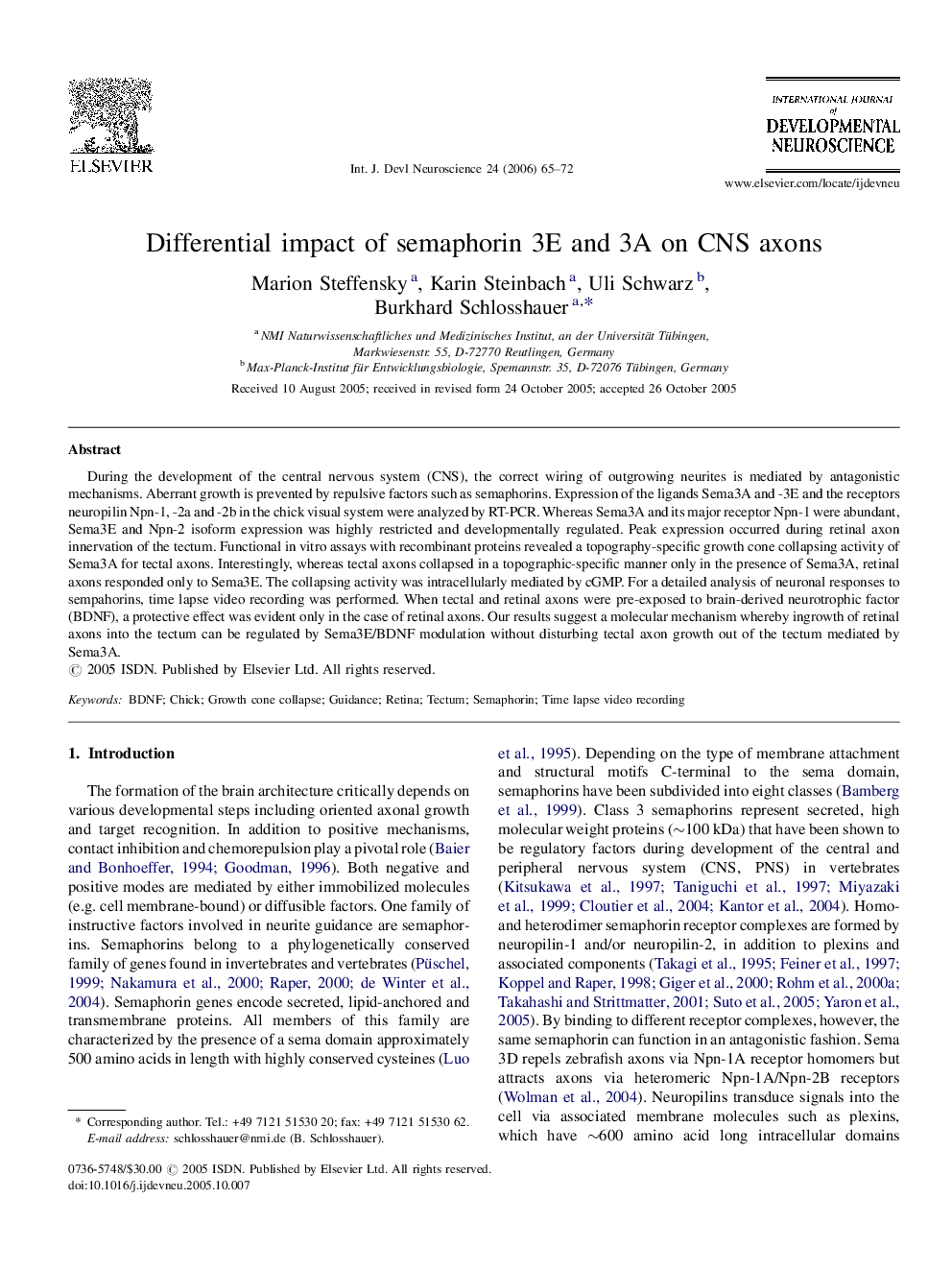| Article ID | Journal | Published Year | Pages | File Type |
|---|---|---|---|---|
| 2787206 | International Journal of Developmental Neuroscience | 2006 | 8 Pages |
During the development of the central nervous system (CNS), the correct wiring of outgrowing neurites is mediated by antagonistic mechanisms. Aberrant growth is prevented by repulsive factors such as semaphorins. Expression of the ligands Sema3A and -3E and the receptors neuropilin Npn-1, -2a and -2b in the chick visual system were analyzed by RT-PCR. Whereas Sema3A and its major receptor Npn-1 were abundant, Sema3E and Npn-2 isoform expression was highly restricted and developmentally regulated. Peak expression occurred during retinal axon innervation of the tectum. Functional in vitro assays with recombinant proteins revealed a topography-specific growth cone collapsing activity of Sema3A for tectal axons. Interestingly, whereas tectal axons collapsed in a topographic-specific manner only in the presence of Sema3A, retinal axons responded only to Sema3E. The collapsing activity was intracellularly mediated by cGMP. For a detailed analysis of neuronal responses to sempahorins, time lapse video recording was performed. When tectal and retinal axons were pre-exposed to brain-derived neurotrophic factor (BDNF), a protective effect was evident only in the case of retinal axons. Our results suggest a molecular mechanism whereby ingrowth of retinal axons into the tectum can be regulated by Sema3E/BDNF modulation without disturbing tectal axon growth out of the tectum mediated by Sema3A.
